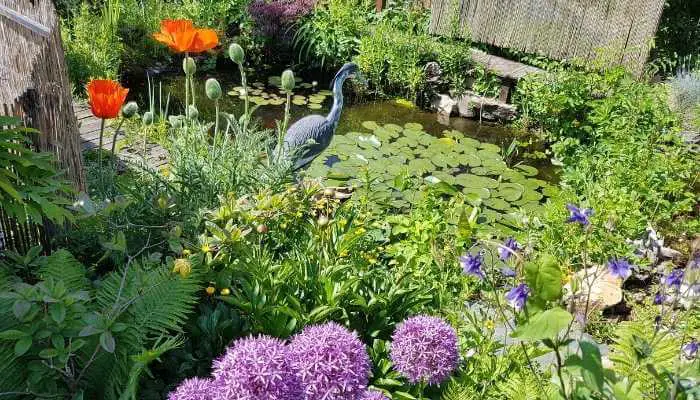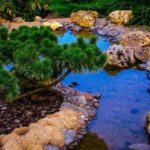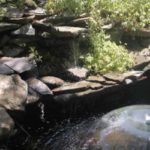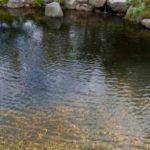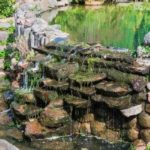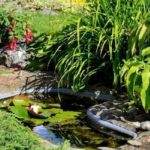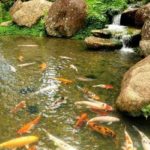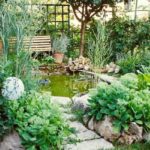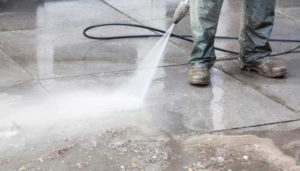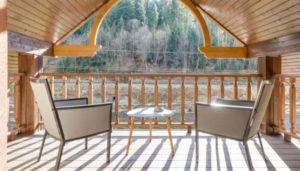Any source of water is an invitation to wildlife. And that means both the wanted kind of wildlife and the unwanted kind of wildlife.
The thing about having a pond in the backyard is that it becomes a full ecosystem. You can expect to have insects of all kinds, lizards, snakes, mice & rats, frogs & toads, along with an assortment of birds coming around. Not to mention, you may even see local wildlife, such as deer and raccoons!
Let’s highlight some of the more common creatures you’ll see around your garden pond –
Insects
So long as you keep your pond skimmer ready and the water aerated and pumping, insect larvae shouldn’t be an issue. That’s not to say that the laying insects won’t try to lay their eggs in the water, though. And if there are any puddles outside of the pond or there are any areas of stagnation in the pond, pesky insects could always be an issue.
That’s one reason a lot of people will keep at least two small fish in their pond on top of handling the other maintenance that can eliminate unwanted six-legged pests. Flies, dragonflies, roaches, damselflies, midges, water striders, and many other insects love a pond.
Lizards & Snakes
When it comes to lizards, you may want to attract them to your yard. Most of the species we run into in the United States (I live on the east coast) are beneficial. They take out problematic insects and sometimes even rodents. So in addition to your garden pond that gives them water and a steady stream of food, you can add a good ground cover, piled stones, and small logs.
Planting local or native grasses will also attract lizards that are native. If you plant plants that produce nectar or berries, you’ll increase the number of insects in the area and therefore the food source for most lizards. Just be sure that you include some larger sticks in your pond that provides a natural ramp for helping lizards when they fall in. Because they will fall in!
Keep in mind that your pond provides the same things to snakes as it does to lizards. Most snakes are going to be just as beneficial as the lizards in the place. They will even take out more rodents than lizards can. However, in my part of the country, we’re just as likely to get poisonous snakes as we are harmless snakes.
Know your species and be careful of letting animals and unknowledgeable humans (namely kids) around your garden pond unsupervised if this is a possibility. If you don’t want to take the chance of such an interaction ever happening, you can purchase scent deterrents like urine from snake predators to use, cinnamon oil, and various other things that can be sprayed around your perimeter to deter them.
Mice and Rats
This is going to get repetitive, but if you have fresh water and a source of food (ie insects and frogs) you may also end up with rats and mice. Mice will eat both insects and vegetation and seeds. But rats can be a tough pest to have because they will take out anything edible in the pond – including fish. How can they get to them? They are excellent swimmers.
These kinds of creatures don’t really contribute to the garden ecosystem. Instead, they move through and leave a mess while eating everything they can get their paws on. They urinate in the water of your pond which irritates fish and frog skin. They are also known to spread disease to animals and humans. Beneficial animals will leave your backyard if there are rats around.
If you want to deter them, do not leave extra fish food around the pond, and try not to leave extra birdseed around or keep feeders near the pond. Though I’m not sure this is possible if you can keep bird nests out of the area, that eliminates a food source, too.
If you can build your pond with bricks around it or any sort of raised barrier that makes it more difficult for rats to get into, that’s a good idea. Cats can dissuade them, using cat fur, or traps have worked. There are also loads of plants that rodents do not like. Some of these aren’t just pretty, they are useful herbs!
| Rosemary | Marigold | Sage | Cyanne |
| Oregano | Daffodils | Black Pepper | Lavender |
| Peppermint | Grape hyacinth | Onions | Garlic |
Frogs and toads
At our pond, we never really had an issue with rats or mice. We had all kinds of frogs and toads, though. What my kids didn’t like was the fact that their bedrooms were so close to the pond. All the sounds of those frogs serenading for their next mate – it could get pretty loud!
Frogs, as well as toads, are great for taking out large numbers of insects. So they definitely have a role to play in your garden pond ecosystem. Frogs eat pests, but they will definitely eat whatever they can fit into their mouths. More than once we had small fish eaten thanks to a large toad.
Also, keep in mind that toads are toxic. They secrete toxins from their skin, so if you handle one, wash your hands after. Keep your pets away from them. Toads don’t live in water, but they like being around water all their life.
Frogs live in water most of their lives or well, tree frogs also spend a great deal of their time outside. But both species begin in water. The more silt you have in the bottom of your pond, the more tadpoles you’ll have. After all, they like to hide in the muck.
Animals can be pests, too.
My mother-in-law had a pond and she kept losing fish and didn’t know what was happening until she saw a clever egret enjoying a meal one day (long-legged waterfowl). I’ve heard similar stories about foxes and raccoons.
If you pay a lot to stock your pond with lovely fish and put in the time to maintain that ecosystem for them, losing your stock can be an expensive way to learn about the animals your pond has invited into your backyard. Some of these animals might carry ticks and even rabies, so be careful with them if they show up for your garden pond.
Though you want small animals around your little ecosystem, you may want to think twice about the large animals. There isn’t much you can do about fliers, but there are methods of discouraging other animals from your backyard.
A lot of people have fences around their backyard and that’s a sure deterrent for most larger animals. You can also use a predator’s urine scent around the perimeter of your backyard to discourage the animals. Of course, if you have a convenient source of water during drought season, that might not stop them.
Things to consider if you want beneficial animals in your backyard garden space
If you want to encourage beneficial animals to congregate in your yard, you have to be willing to provide for them what they need. The pond is definitely an ecosystem in that way. It provides water. It often provides shade. It provides shelter. It can provide prey – insects, arachnids, and frogs. But you have to be willing to let that happen.
If you use pesticides or grass killers, non-organic fertilizer, chemicals, or snail pellets in the garden, you’re not only taking away the prey species but can also harm the water supply and killing the very things you need available to keep these other animals around.
You see, the idea of keeping lizards and toads around it to be the pest control for your little ecosystem. So you don’t want to poison them. Composting somewhere in the yard will also draw worms, insects, and snails for lizards and toads to feed upon.
Also, don’t ever stock your pond with more than a few koi. Especially don’t stock a pond with non-native anything. Yes, you can buy frogs and such, but non-native organisms can add disease and can destroy local species. Just think before you do it. Unlike your fish, toads and frogs can travel away from your pond and become invasive.
